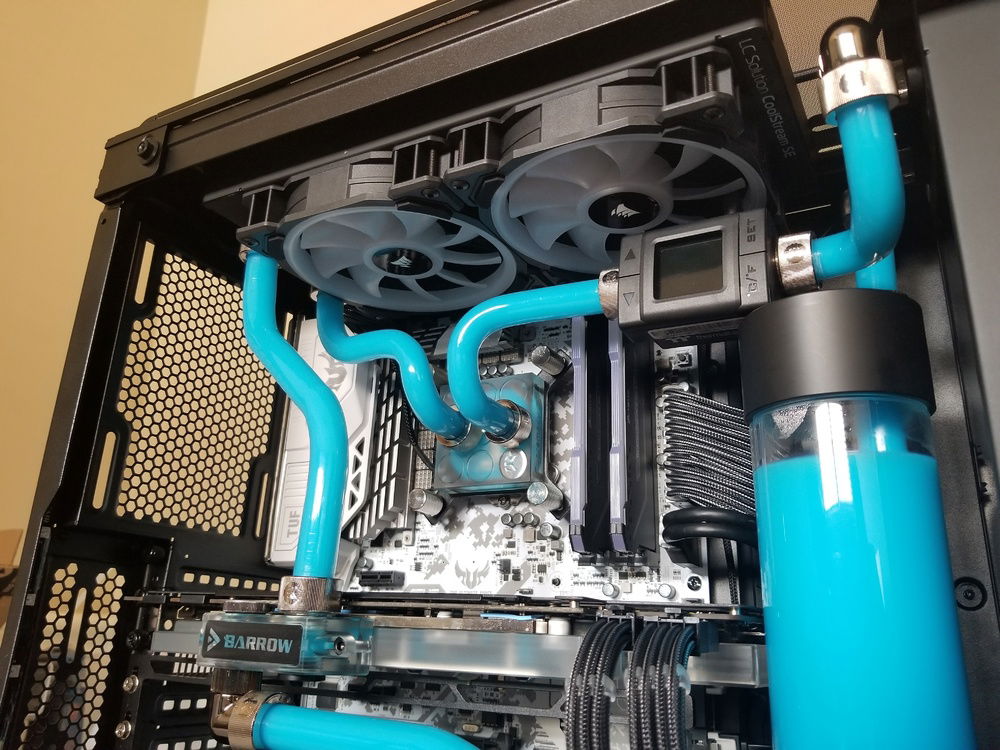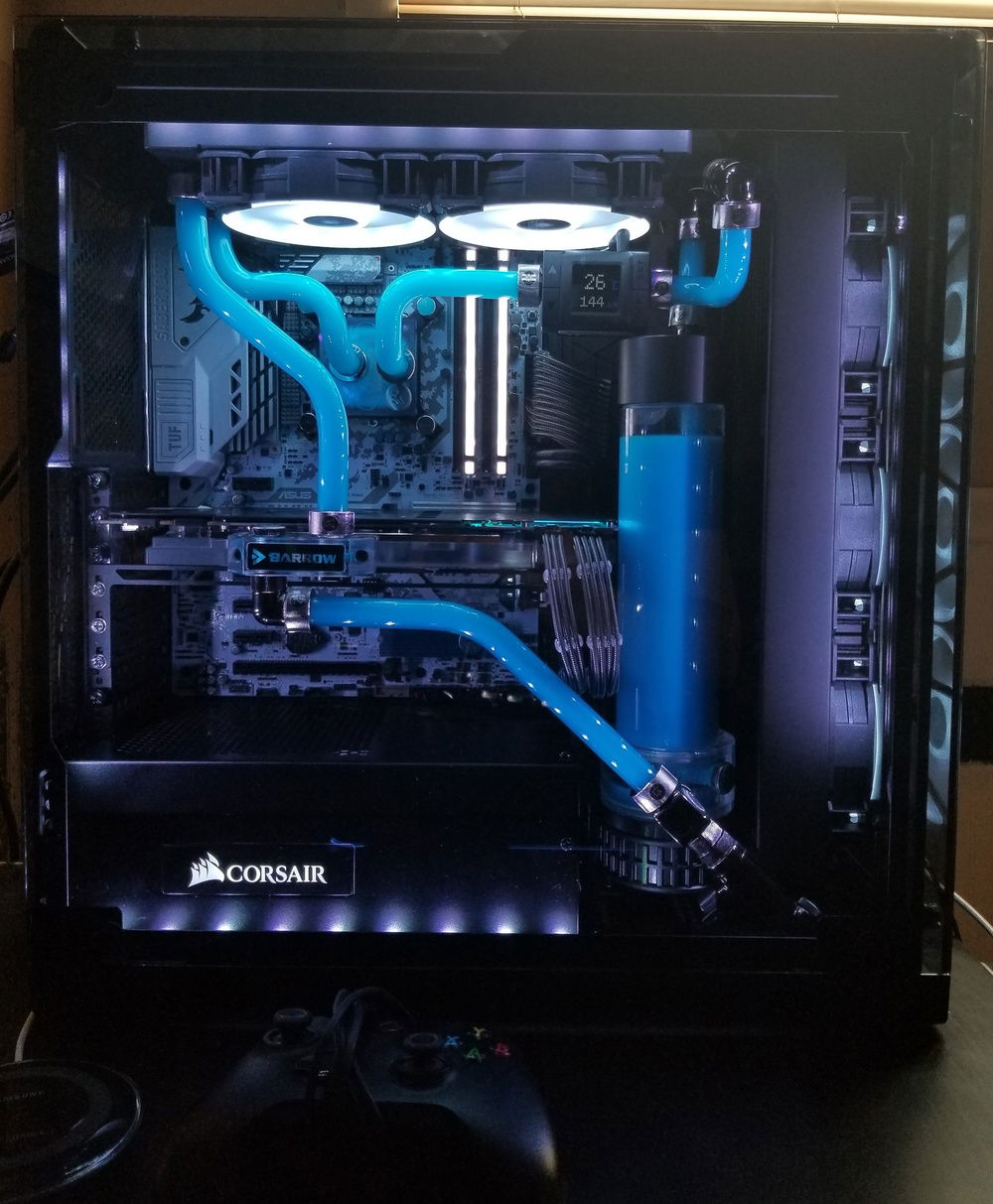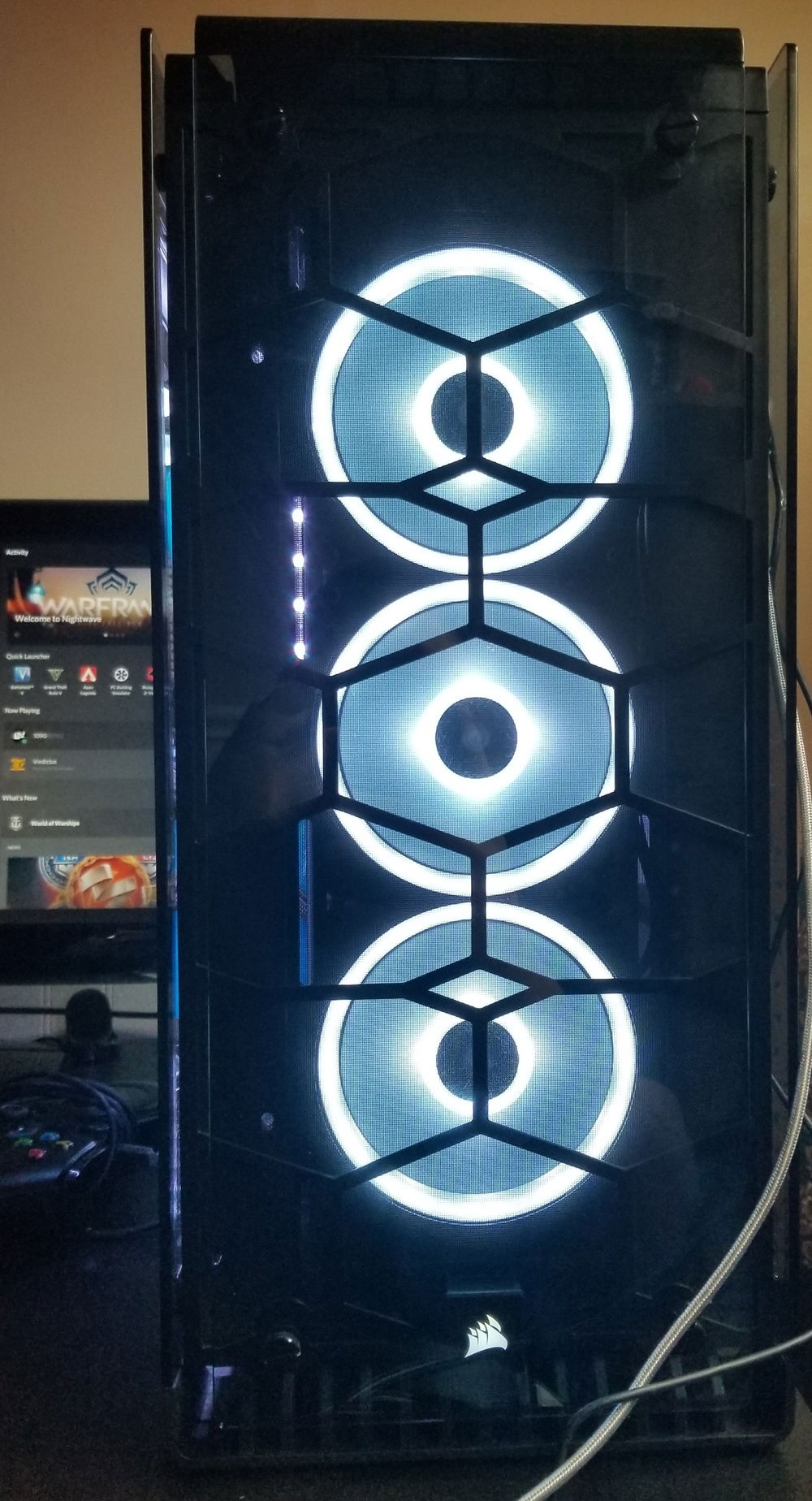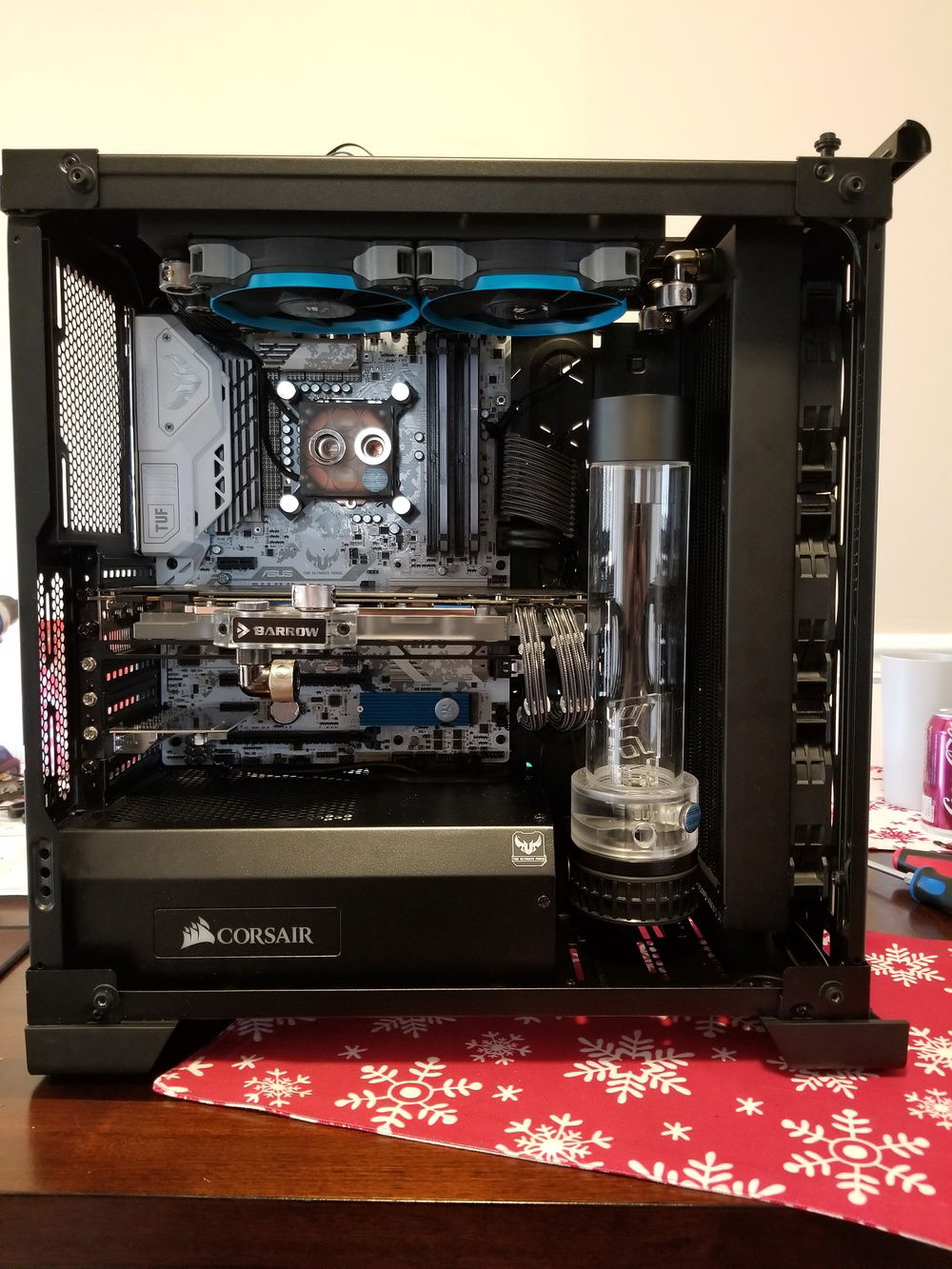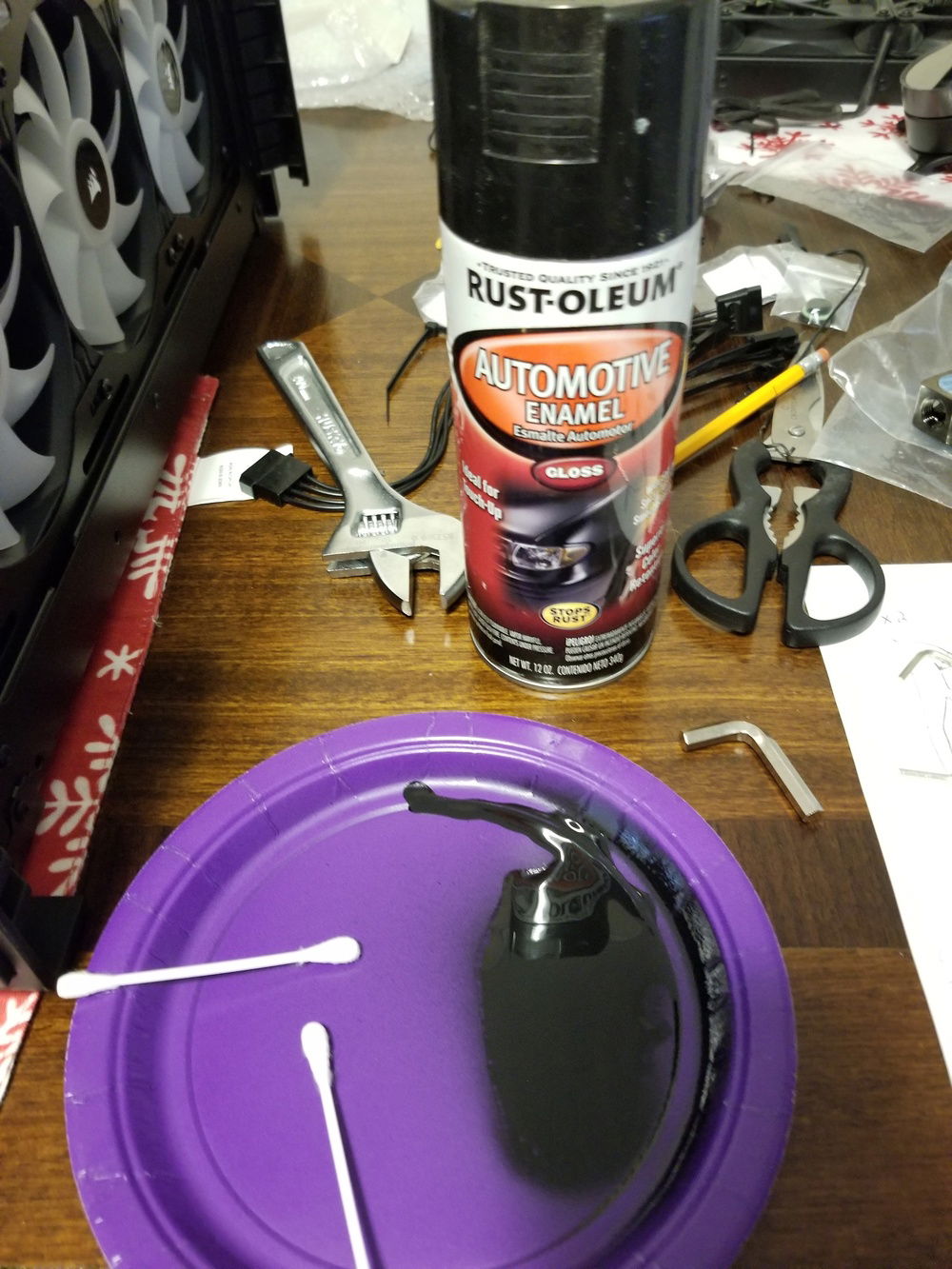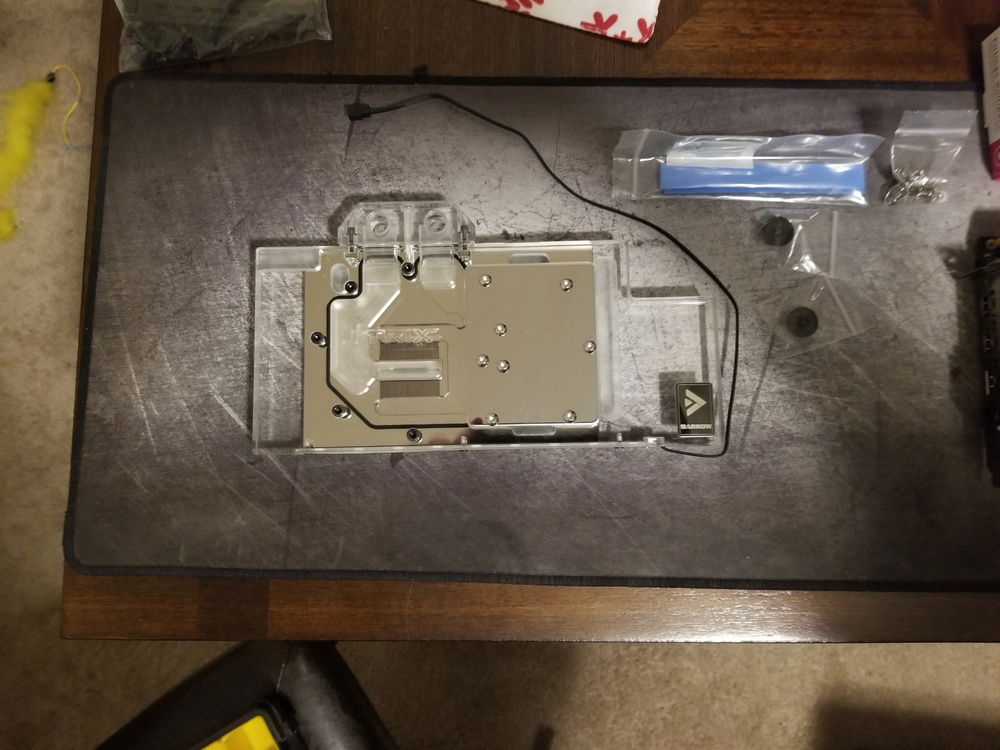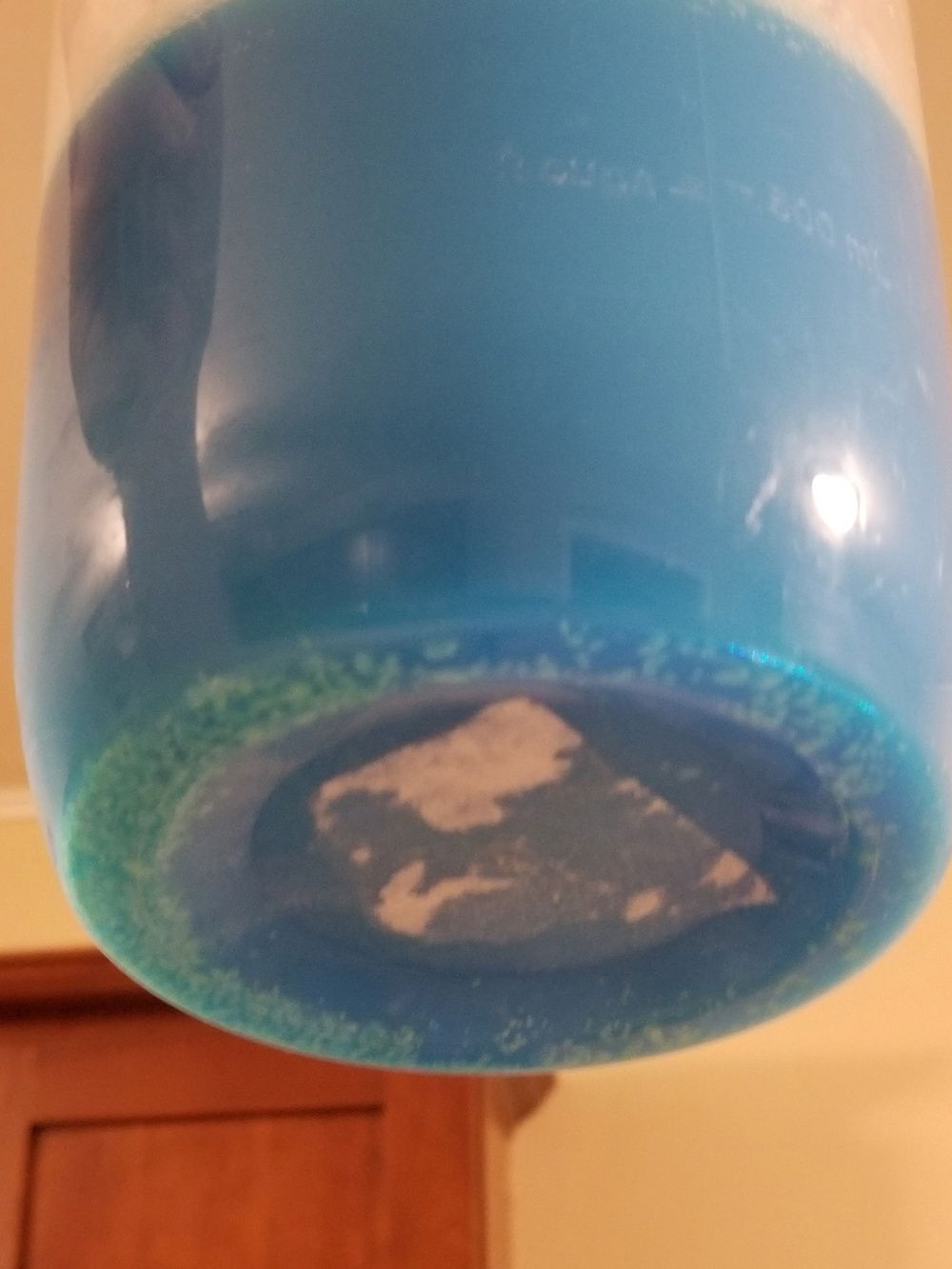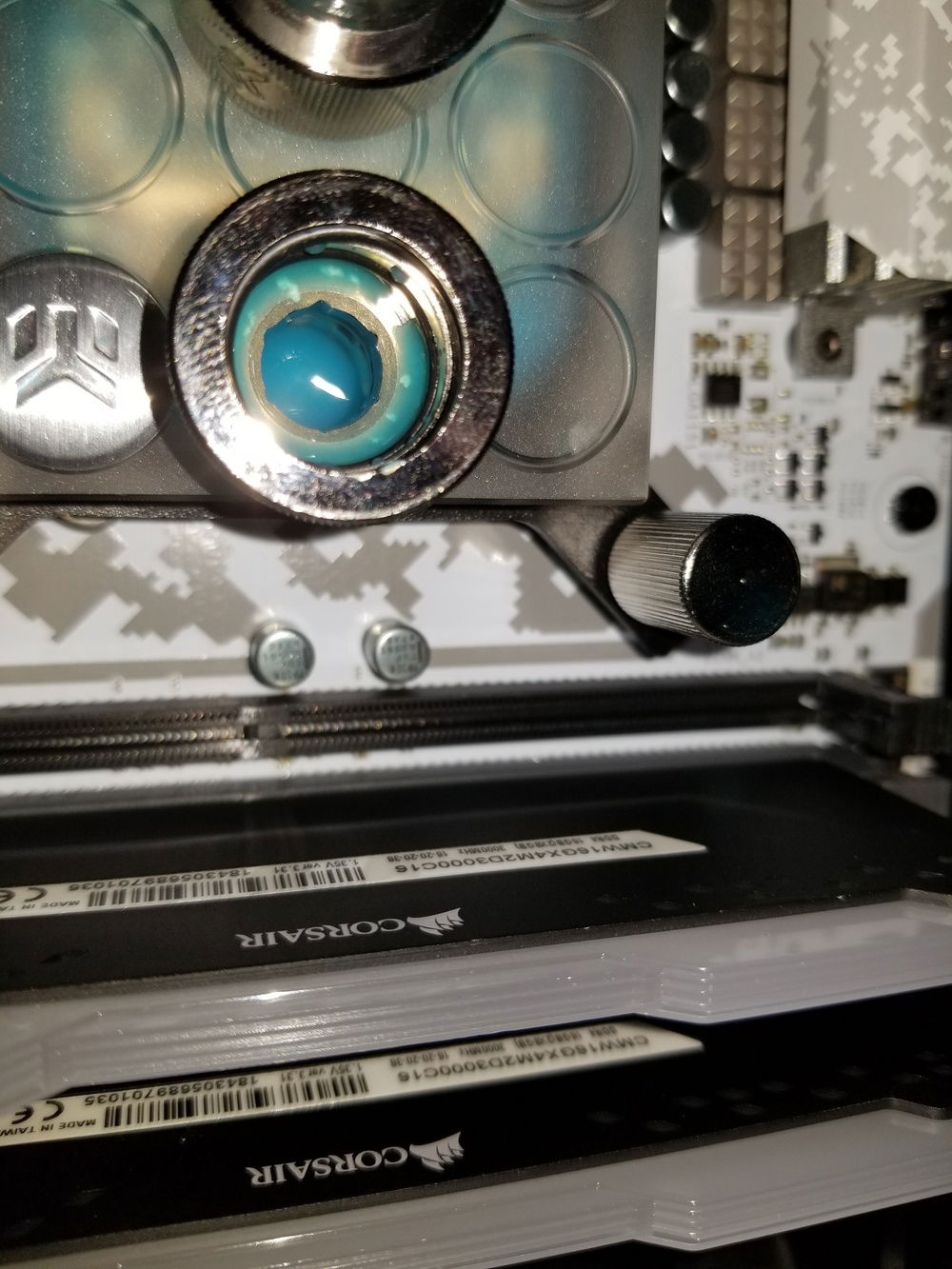In natural light with the side glass off.
I hand bent everything using EKs 16mm OD tubing. I tried to have similarities in most of my bends. Pump-gpu/gpu-top rad and top rad-cpu/cpu-Thermaltake sensor both share similar bends.
Way happier with my cable management in this case this time around.
On my desk lit up in white.
Figuring out where I need to drill mounting holes into the bottom of the case for the EK D5 pump mount/EK L-Brackets. As you can see between my 1080 Strix card and going me going with the EKWB PE360 Rad I had barely enough room to fit into my pump/res. After switching the SP120 fans in this picture with corsairs LL120s the rubber pads on the LLs actually brought the rad even closer to the res which made it quite hard to put the rad and new fans back in.
With my GPU/Rad choice I was able to use one of the existing mounting slots on the bottom and only had to drill two additional holes for the pump/res.
Bottom of case with holes drilled.
I used some Black Enamel paint to touch up the holes I drilled in the bottom of the case and in the top where I made new holes for the top rad.
I just dabbed the paint on with some q-tips as it will never be seen under the mount and the screw heads.
Pump/res mounted with EKs hardware. This is actually now adjusted down and much close to the bottom of the case for clearance issues with the top of the res and my Thermaltake sensor. In order to get this mounted I had to place the case on its side and prop the res up straight. Then using a long thin pair of pliers I held the nuts while inserting the screws from the bottom of the case. Next time I have the loop apart I will be permanently affixing the nuts onto the brackets so this is no longer a pain to mount.
The fan/res mounting slots on the top of the case are offset and made to fit both 120/140mm fans. Since I went with the slightly thicker PE360 rad in the front I had to position the top rad back abit further to give myself enough room to reach the fittings on the front rad. I did this by making use of one of the mounting slots which was slightly longer for 140mm fans and extending the opposite slot enough to get the rad back and straight and then drilled an extra mounting hole where I had enough to do so since nothing else lined up anymore. The rad is very solid both with the hard tubing not installed and with. This is also not able to be seen with the cases dust filter and glass installed.
Managed to snag one of these Barrow blocks for my gpu. I liked the look a little more of this one over the EK block.
Using original backplate.
Leak checking with Corsair Node Pro doing its RGB rainbow goodness.
With the LL120s there is almost no room between the PE360 and the pump/res.
The cause of my misadventure....
This is the issue I ran into with the EK Cryofuel Solid Azure Blue Concentrate which I have since found out others had been having the same problem. Unfortunately for me I mixed everything per directions while standing above my work surface and filled my EK squeeze bottle via a funnel with this mixture and began filling my loop before I found out there was an issue. As you can see there are varying sizes of chunks in this fluid.
After my first squeeze bottle was in this was enough fluid to leave the pump on and it circulate and all I had to do was top off the res. I just so happened to take a look at the bottom of the gpu and noticed there was some small white granular stuff building up in the gpu block fins at but at this point there wasnt a whole lot of it. So I took a close look at my remaining fluid mix and saw the chunks on the bottom that you can see in the previous picture.
I did some quick googling and found this was an issue some others were having. Someone suggested pulling the straw from the fill bottle up away from the bottom so none of the chunks would get sucked up if they do get into the fill bottle. So I mixed my other bottle of concentrate to give myself plenty of fluid to work with and kept the straw pulled away from the bottom and topped off my 205mm res which was only half full from the first bottle. However after a very short time while waiting for the small air pockets throughout the system to work their way out I checked and the gpu had gotten completely gummed up and looked horrible. I realized that theres just a bunch of the smaller stuff suspended in the fluid which is still too big to make it through the loop and the big chucks that settle wernt the only issue.
I completely flushed then tore apart and cleaned my entire loop including the blocks and the radiators. And after a few days was able to get an RMA in the works with EK. My dining room tabled sat like this for a week and a few days while I waited.
I finally receieved the RMA fluid which I noticed was from the exact same batch as the original fluid I got. I went ahead and mixed it and this time there was no chunks settling to the bottom, so everything looked good. I put my loop back together and did another leak test with distilled water for 4 hours. Then drained and filled loop with the new coolant. However after a while I noticed I again had severe build up in my gpu block as well as around where the d5 pump slides into and seals on the clear pump top I used.
Some collected in the fittings as well.
I complexly drained while saving the coolant and flushed the loop multiple times. I then tore it apart once more to clean and flush everything out. Once done I reassembled and rechecked for leaks. Then I used coffee filters to filter the new coolant they sent me before putting it back into the system since I could not wait another week for potentially more bad fluid from them. The filters caught a bunch of this small particulate. I believe it is larger excess UV reactive component they use in their uv reactive solid line. Checking my loop tubing with a flash light and the uv lights on the cpu block shows it still has finer UV particles that did pass through the filter. Days later I do not have the massive build up issues. However I am unsure if filtering this coolant may or may not have effected its anti-corrosion/anti-growth properties.
CPU block didnt get as much build up so I think the gpu block was catching most of it.



